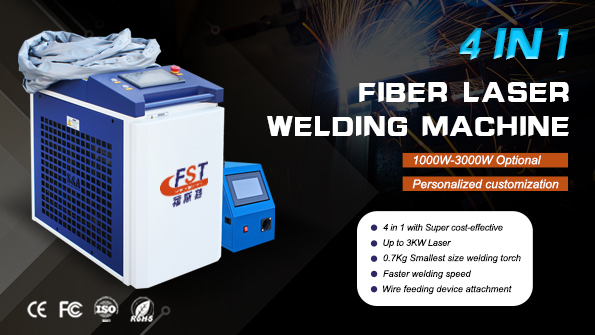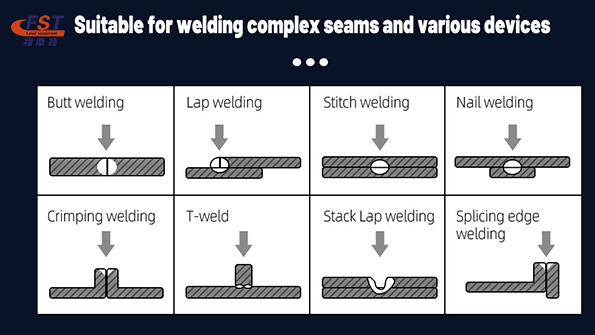To ensure welding safety and quality, the following inspection and preparation procedures must be strictly followed before startup and during operation:
I. Pre-Startup Preparations
1.Circuit Connection Verification
Carefully inspect the power supply connections to ensure correct wiring, particularly the grounding wire, which must be secure to prevent electrical hazards such as leakage or short circuits.
Verify that all signal and control cables are properly connected to avoid equipment malfunctions due to poor contact.
2.Gas Supply Inspection
High-purity inert gases (eg argon, helium) are recommended as shielding gases to effectively isolate oxygen and prevent weld oxidation.
The gas must be oil-free, moisture-free, and dry to avoid impurities that could compromise weld pool stability and weld seam quality.
II. Laser Equipment Startup Check
Before powering on, ensure the emergency stop button is disengaged and the safety door is closed.
After turning on the main power, check the control panel to confirm no alarms or fault indicators are active.
III. Beam Path Inspection and Red Beam Alignment
Observe the red beam emission status. Activate the red beam indicator and check for a clear, focused beam.
When projected onto the workpiece, the red beam should form a coin-sized, sharply defined spot without dark patches, indicating an unobstructed and clean beam path.
If the red beam appears blurry, scattered, or exhibits dark spots, promptly clean the lenses or inspect beam alignment.
Red Beam Positioning Check
The red beam must remain centered on the welding wire to ensure precise welding path alignment. If deviation occurs, adjust the reflector or laser head position for calibration.
Misalignment can lead to welding defects, poor joint accuracy, or even structural flaws.
IV. Precautions and Safety Reminders
Startup operations must be performed by trained personnel only.
Wear specialized laser safety goggles during operation to protect against direct or scattered laser radiation.
Unauthorized personnel must stay clear of the laser head and work area, especially during laser emission.
If abnormal noises, smoke, or alarms occur, immediately stop work, cut power, and contact technical support.
V. Ground Clamp and Gas Purge Treatment
Connect the ground clamp to the welding table or workpiece to ensure a proper electrical circuit, preventing abnormal current feedback that could damage equipment.
Purge the ground switch with gas for a short period. Why is this step necessary? To prevent dust accumulation or spatter in the nozzle calibration tube, which could contaminate or burn the
protective lens.
VI. Parameter Confirmation and Adjustment
Verify correct settings, paying attention to power, oscillation frequency, oscillation amplitude, and wire feed speed.
Activate the laser switch while wearing laser safety goggles.
During welding, maintain the laser gun at a 45°–60° angle.
Why Choose a 45°–60° Angle?
1.Enhanced Gas Protection
Laser welding often employs shielding gas (eg argon) to prevent molten pool oxidation.
An inclined angle ensures more uniform gas coverage, improving protection effectiveness.
2.Prevents Laser Reflection Damage
For highly reflective materials (eg aluminum, copper), a 90° vertical beam increases the risk of laser reflection back into the optical system, potentially contaminating or damaging lenses.
An angled approach redirects reflections, safeguarding the laser optics.
3.Optimizes Penetration and Weld Quality
Adjusting the beam angle fine-tunes the focal point on the material, promoting ideal penetration and weld formation while minimizing defects like porosity or incomplete fusion.
4.Improved Maneuverability and Visibility
A 90°vertical position may obstruct the operator’s view.
An angled approach provides better visibility and control, facilitating smoother weld seam tracking.
Why Avoid a 90° Angle?
1.High risk of laser reflection.
2.Restricted visibility and operational difficulty.
3.Increased likelihood of defects (eg porosity, slag inclusion).
Laser welding machine demands extreme precision and attention to detail. Every preparatory step is critical to ensuring weld quality and equipment safety.
At Foster Laser, we uphold the principle of “Quality First, Details Matter.” We not only provide high-performance laser welding equipment but also deliver standardized, systematic
operational procedures, empowering welders to tackle complex tasks with confidence.
Choosing Foster means more than selecting a machine—it means partnering with a reliable and stable ally. May every startup begin with rigor and precision, and may every weld seam embody
professionalism and trust.
Post time: Jun-27-2025




